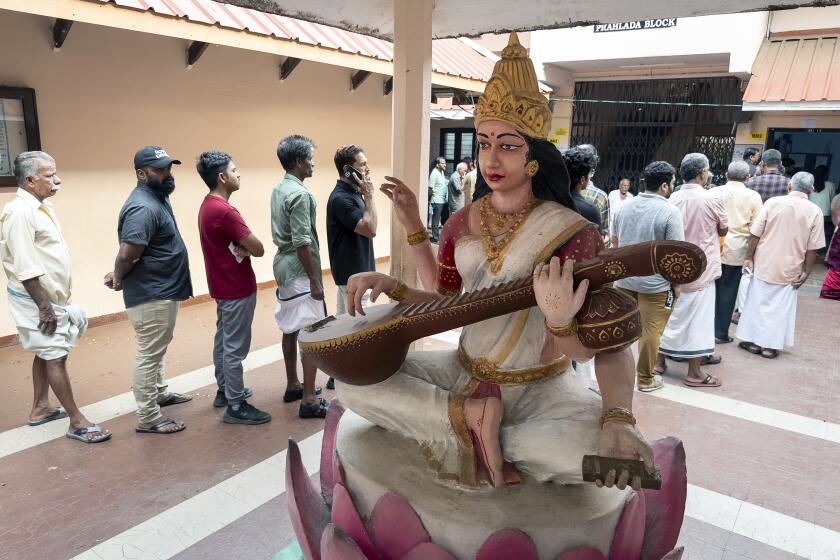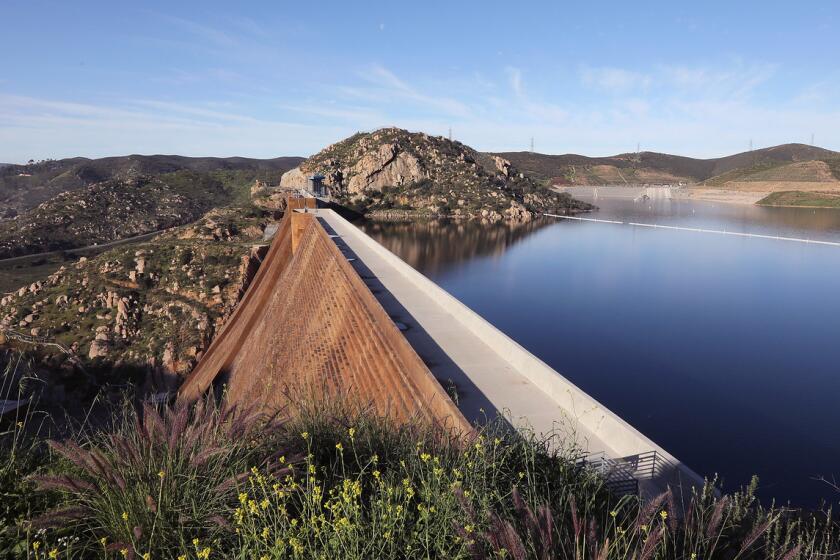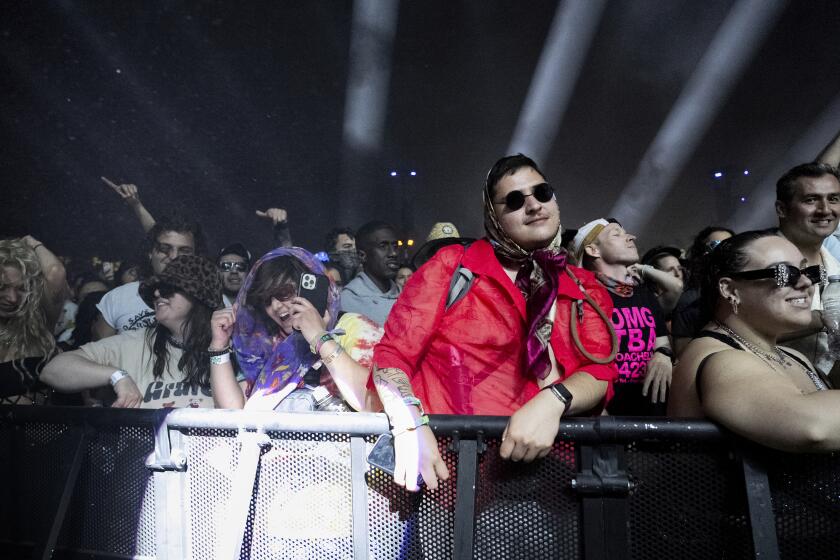Mayoral voting nears end
The two-part special election caused by former Mayor Bob Filner’s resignation last year comes to a close today as San Diego voters choose one of two City Council members — Democrat David Alvarez and Republican Kevin Faulconer — as the city’s next mayor.
Polls opened at 7 a.m and will close at 8 p.m. For those who haven’t voted yet and don’t know where to go, you can find your polling place at sdvote.com or by calling (858) 565-5800.
San Diego County Registrar of Voters Michael Vu predicted a turnout of between 45 and 50 percent of registered voters and said more than half the votes cast will be by mail or absentee ballot.
Voting at polling places was going smoothly, he said.
“Things are quiet -- which is a good thing,” Vu said earlier Tuesday. “We haven’t heard of any major complaints.”
That comment appeared to hold up through out the day polling places, while slow at times, reported few problems.
The mayoral election will only be the beginning of a political shake-up at City Hall.
The inauguration ceremony for the new mayor will likely be held in early March after election officials certify the results. The rest of the council would then have 30 business days to appoint someone to fill the mayoral winner’s spot on the nine-member legislative body. And there could also be as many as three hotly contested council races in the June primary as Democrats try to hold on to their current 5-4 council majority.
Before those dominoes fall, voters must decide whether Alvarez or Faulconer will be the first sitting council member in 50 years to be elected San Diego mayor. They advanced to Tuesday’s runoff after finishing in the top two spots in the Nov. 19 election.
The two candidates continued to campaign aggressively Monday as Alvarez picked up the endorsement of Gov. Jerry Brown and spent the morning greeting passengers commuting on the trolley system. Faulconer could be seen Monday morning with his mother and other supporters holding signs off Sunset Cliffs Boulevard and plans to hold a get-out-the-vote rally Tuesday with former Mayor Jerry Sanders.
Special mayoral election
- How Faulconer won it
- Faulconer brings city to familiar ground
- Map: How each precinct voted for mayor
- Faulconer win has lessons for state GOP
- Faulconer wins mayor’s race
- Editorial: A new mayor for San Diego
Final election results, complete coverage
The two sides have spent more than $9 million since the race began after Filner’s Aug. 30 resignation amid a sexual harassment scandal. Alvarez and his supporters have raised more than $5.1 million, including nearly $4.2 million from labor unions. Faulconer and his backers have collected nearly $4.2 million, including $1.7 million from pro-business groups.
Regardless of who wins, more changes are in store because the four-year council terms for both Alvarez and Faulconer each expire this year. Faulconer is termed out and can’t run again while Alvarez, if he loses the mayoral contest, would likely coast to re-election as councilman.
When one of them is elevated to mayor, the council seat becomes vacant and because there’s less than a year remaining on the term the City Council can appoint a replacement who would then serve until early December. That person, however, cannot run for re-election under city rules.
If Faulconer is elected mayor, it would leave a 5-3 Democratic majority on the council and, in all likelihood, his replacement would be a Democrat. That would temporary give Democrats the six votes needed to override a mayoral veto.
If Alvarez is elected mayor, it would leave a 4-4 split between Democrats and Republicans and a possible stalemate over appointing a replacement. It’s hard to imagine either side willingly giving the other a council majority.
Meanwhile, Faulconer’s District 2 council seat — which represents the coastal areas of Mission Bay and Pacific Beach — is up for grabs. Republican Councilwoman Lorie Zapf currently represents District 6, but the 2010 redistricting process put her home in District 2 and she is now seeking to become Faulconer’s successor. Her top challenger appears to be Sarah Boot, a Democrat who recently was an assistant U.S. attorney.
With Zapf out of the Distrtict 6 picture, that seat is open and there are already six potential candidates, including several Asian-American contenders. The district covers northern San Diego neighborhoods such as Mira Mesa.
If Alvarez wins the mayor’s race, it would put his District 8 seat in play. The district covers much of southern San Diego and is heavily Democratic so it’s almost certain to be an intraparty contest.
Councilwoman Myrtle Cole, who represents District 4’s southeastern neighborhoods, is considered a safe bet for re-election after winning the seat last year in a special election.
The council seats will on the June ballot. If no one receives more than 50 percent of the vote, the top two finishers compete in a November runoff. The winners would take office in December.
The trigger for all those possibilities is the mayor’s race, which a U-T San Diego/10News Poll published Sunday shows is a statistical dead heat heading into Election Day.
More than 163,000 mail ballots from city voters had already been collected by election officials as of Monday. Registrar Vu said he expected several thousand more to arrive by mail Tuesday and then thousands more beyond that from voters who drop off their mail ballots at the polls.
Vu said Monday that roughly 5,000 more Democratic than Republican ballots are among the absentee and early vote-by-mail ballots his office has received. Some of those ballots will be ones cast by city of Solana Beach voters deciding a community center issue, but the vast majority are mayoral votes.
U-T Government Editor Michael Smolens updated this story Tuesday morning.
Top headlines by email, weekday mornings
Get top headlines from the Union-Tribune in your inbox weekday mornings, including top news, local, sports, business, entertainment and opinion.
You may occasionally receive promotional content from the San Diego Union-Tribune.



